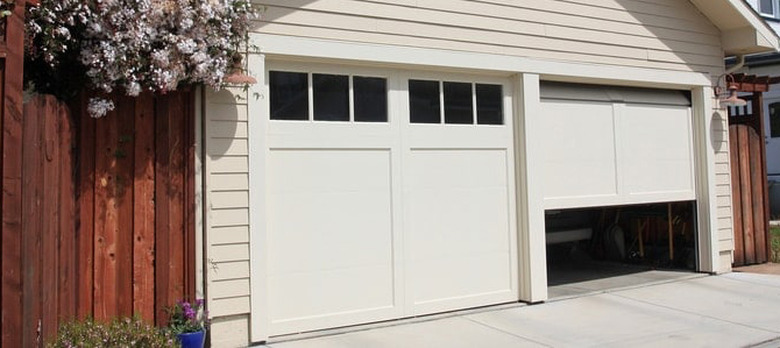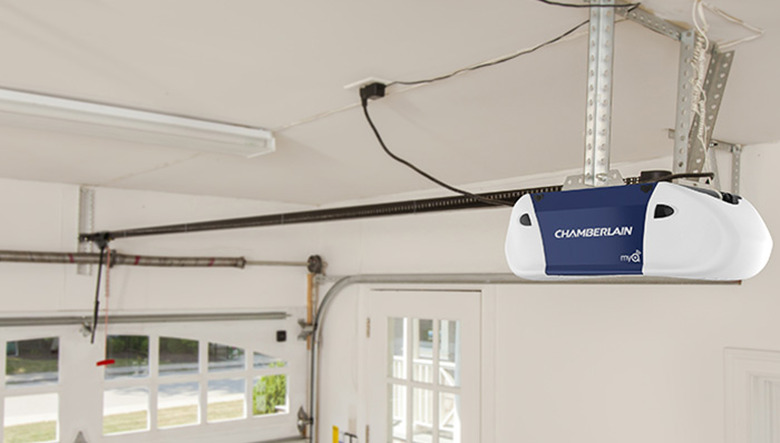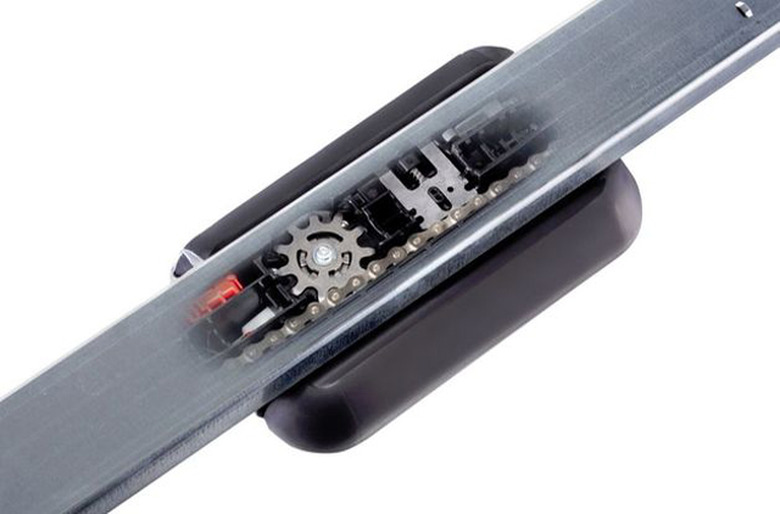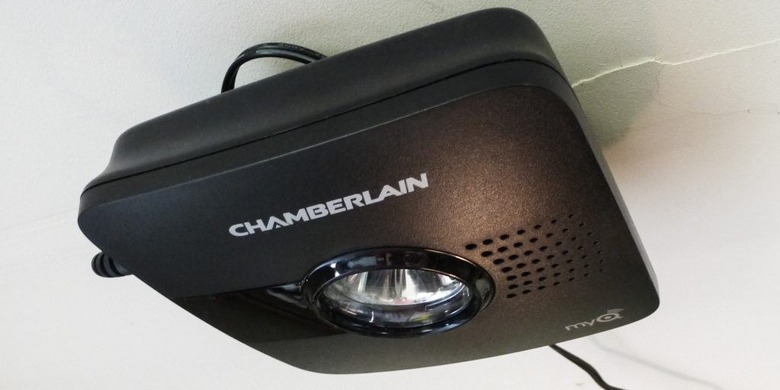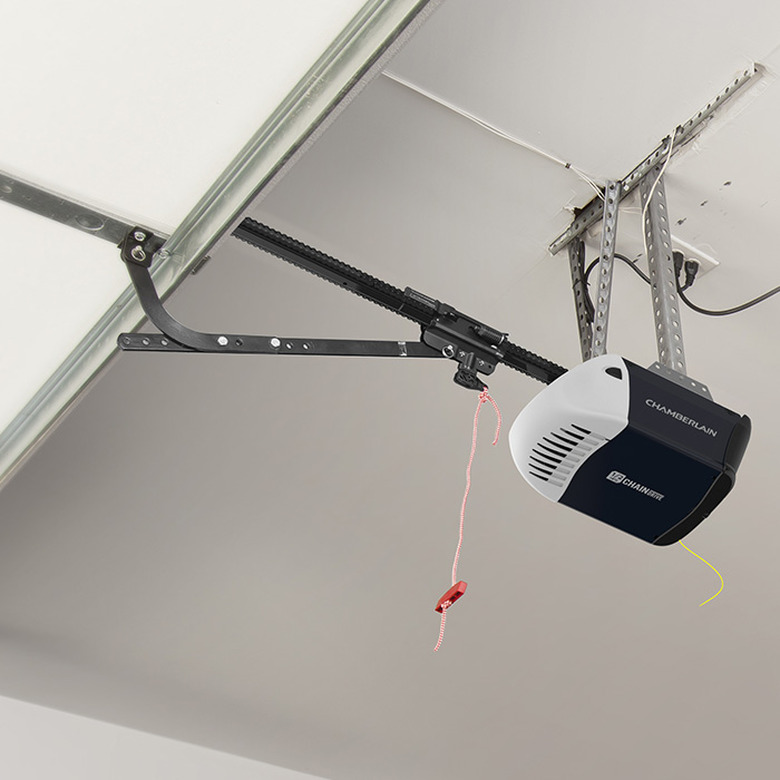A Homeowner's Guide To Garage Door Openers
There was a time when opening your garage door from the comfort of your car seemed a great luxury. No more getting out of your car in the rain to muscle open the door, no more fumbling for a light switch in the dark garage. Those early garage door openers, luxurious as they appeared at the time, were in retrospect fairly primitive. Modern garage door openers, even the most basic ones, are quieter, more reliable and more secure. The range of features available with more premium models put them in another league altogether.
All garage door openers work in the same basic way: A motor is connected to a carriage assembly that runs along a rail between the motor and the front of the garage. The carriage, in turn, is attached by an arm to the garage door. The motor, when activated, drives the carriage that pulls the garage door open or pushes it closed. There are four different types of garage door opener mechanisms—chain drive, belt drive, screw drive and direct drive—the principal difference between them being how the motor is connected to the carriage. That difference gives each type some distinct qualities that may influence your choice.
The Four Types of Garage Door Openers
Chain-drive garage door openers are the most common and usually most economical of the four types of openers. Because of their popularity, there are a great many models of chain drive openers to choose from, produced by myriad manufacturers. With a chain-drive garage door opener, the carriage is connected to the motor by a chain similar to a bicycle chain and propelled by a sprocket affixed to the motor shaft. Chain-drive garage door openers are relatively simple and reliable, but they are noisy. If your garage is separate from your home, that probably won't be a problem, but if your garage is alongside or below your living quarters, you may want to consider the other opener types, each of which is quieter than the chain-drive opener.
Belt-drive garage door openers are similar in design to chain drive, but instead of a hard metal chain, the motor drives the carriage using a toothed belt. Use of the belt alone would make the belt drive opener quieter than a chain drive, but additionally, belt-drive garage door openers typically employ DC-powered motors as opposed to the AC motors used by chain-drive openers. DC motors are quieter and smaller than comparable AC ones and sometimes come with a battery back-up for use during power outages.
With screw-drive garage door openers, the motor turns a threaded shaft and the carriage is drawn along the shaft as it turns. Like belt drive openers, screw drive garage door openers are quieter than chain drive ones and, except for making certain the screw shaft is periodically lubricated, require little maintenance.
Direct-drive garage door openers turn the principal of the chain drive on its head. With direct- drive openers, the chain is tensioned and stationary and the motor moves along it, pulling or pushing the carriage. With only one moving part—the motor—direct drive garage door openers are reliable and quiet.
How Powerful a Garage Door Opener Do You Need?
For most garage doors, a one-half horsepower opener is sufficient. While some sources will advise a three-quarters or even one horsepower motor if your garage door is exceptionally large or heavy, its size is irrelevant if your garage door is appropriately counterbalanced. If you can open your garage door by hand, a one-half horsepower opener should be big enough. Of course, the larger motor will undergo less strain in operation and may last longer, but it will be more expensive initially, so that's a decision you will have to weigh for yourself. Technically, DC motor power is not measured in horsepower, so manufacturers often give the power equivalent of DC motors in terms of HPS, which stands for Horse Power Similar or HPc, which stands for Horse Power comparable.
Garage door Opener Features to Consider
Modern garage door openers come with a variety of features, including safety features mandated by law.
Safety. All garage door openers are required to automatically reverse if the door encounters an obstruction and to have a light beam and sensor unit at the base of the door opening that will not permit the door to close if the beam is interrupted.
Lights. Expect your garage door opener to include overhead lights that switch on when the opener is activated. Better openers will also let you turn on the lights independent of opener operation.
Extensions. Garage door openers presume a standard 7-foot high garage door. If your door is 8 feet or more, you will need an extension for your carriage rail. Some opener models include an extension and most offer one as an optional add on.
Security. In the early days of garage door openers, the number of code combinations was limited, so that occasionally neighbors would find they had the identical code. While limited code remotes are still supplied with lower-priced openers, look for an opener with rolling-code security technology if greater security is a concern. Rolling-code technology creates a new code from among billions of possibilities every time you use your remote.
Remote entry. The garage door opener you choose may or may not come with a remote entry keypad. These, like your portable remotes, are typically wireless, which makes their installation easy. If a keypad is not included with your opener and you want one, it should be available as an add-on accessory.
Smart compatibility. With the rise in popularity of the smart home has come the smart garage door opener. The good news is that just about any garage door opener manufactured in the last 25 years can be integrated into a smart home system through the addition of any one of a variety of smart hubs available. The hubs differ as to which of the various smart home systems they are compatible, so that will limit your choices somewhat— assuming you have a smart home system already in place. Otherwise, look for the smart garage door opener hubs that are compatible with as many systems as possible and check with the manufacturer to assure that their device will work with your opener.
Is Installing a Garage Door Opener a DIY Project?
Installing a garage door opener yourself is by no means a simple project and it's considerably easier if you have a helper, especially for the awkward parts. But openers usually come with detailed installation instructions and any reasonably competent handyperson can do it successfully. Expect that the installation will take at least four hours.
Your garage door opener will need an electrical outlet nearby—usually on the ceiling—and that electrical source must be constant—independent of any switches. If your opener is not replacing a previous one, providing a power source is preliminary to any opener installation.
For the garage door opener itself, you will be instructed to assemble the carriage rail and then mount it to the motor unit. After positioning the carriage on the rail, you will fasten the front of the rail to a bracket you have attached to the wall above the door. Then you'll lift the rail with the motor attached and bolt the motor unit to angle irons you have previously mounted on the rafters or the ceiling. An arm connects the carriage to the garage door. The mechanism for moving the carriage and thus opening the garage door will depend upon the opener type you have chosen, so the specifics of attaching and adjusting that mechanism will vary. Finally, you will mount and connect the opener-controlling wall switch. The actual instructions will, of course, entail many more intermediate steps.
If you have any previous experience with garage door openers, perhaps you have a brand you know and trust. Even if you don't have a preference, it's best to stick with an established and proven brand, such as Chamberlain, Genie or Liftmaster. Garage door openers are hard-working pieces of equipment. Avoid the temptation of a bargain-priced garage door opener from an unfamiliar manufacturer. In the long run, that might be the least economical one you could choose.
